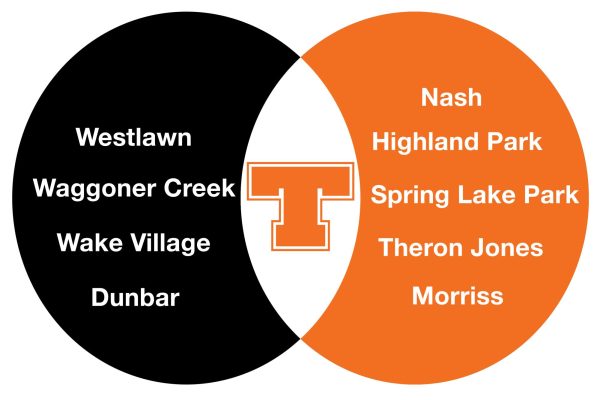Breaking the code
Why coding should be a requirement for STEM programs
The classes are harder, you’re in a different environment and this is probably the first time you have been completely independent.
April 21, 2021
When going off to college, everything is new and terrifying. The classes are harder, you’re in a different environment and this is probably the first time you have been completely independent. The one thing most people can feel secure in is the major that they chose. Sadly, those choosing to go into a career in engineering or technology are in for a rude awakening.
Professors expect students to come into class already proficient in the skill of coding, which has become increasingly important in STEM careers. This leads to students starting the year behind, which then causes them to become increasingly overwhelmed over an issue that could have been easily avoided. Despite this known fact, the Texas Education Agency, also known as TEA, does not require coding to be taught to fit the engineering and technology framework.
Due to it being a major component in technological careers, high schools should make coding a requirement to receive those endorsements.
Many people may think that their dream job will have nothing to do with coding, with this mindset, high schoolers don’t try to learn this important skill. However, with the world becoming more and more reliant on technology, coding is making its way into an increased number of technical and non-technical jobs. These careers include engineers, analysts and technicians, but also more creative occupations like graphic designers. Also if anyone is interested in developing a website or an app, coding is required to become software, app and web developers. Even chemists and medical researchers are using more coding in their field of study.
With all of these popular professions incorporating coding into the job, it makes it even more important that the Texas Education Agency puts an emphasis on learning this skill.
To receive the STEM endorsement, in the state of Texas, students currently must complete five math credits including Algebra II and two other maths that have Algebra II as a prerequisite, five science courses including biology, chemistry and physics, at least two Career and Technology Education classes and a completed program of study related to STEM.
As of now, a specific Computer Science course, or any other class that teaches the coding skill, is not part of the state criteria for the endorsement. This puts these STEM students already at a disadvantage when pursuing these careers at a university level. They are behind in the course that could affect their chances with their dream profession.
A Career and Technology credit could fulfill this role, as coding is explored in many of these types of classes. But without a state recognized standard to have coding be a requirement, some will pursue a different route to complete the endorsement leaving a void in their education as they go off to college.
Texas High actually offers many classes that help fill this coding gap, including all four levels of computer science and robotics. Completing one of these for the program of study requirement allows for students to get proper coding training along with being prepared for college. This also leads to the issue of students choosing different programs of study that end up steering them away from STEM careers. Again, the main solution seems to be having TEA make it a state requirement to include coding in STEM programs.
Given all of this knowledge, it is apparent that the world is changing. It is heading toward a society where having even a basic grasp on technology could help in future careers. The Texas Education Agency should be aware of this and keep up to date with the evolving world. That is the main way to prepare students for their futures.





















